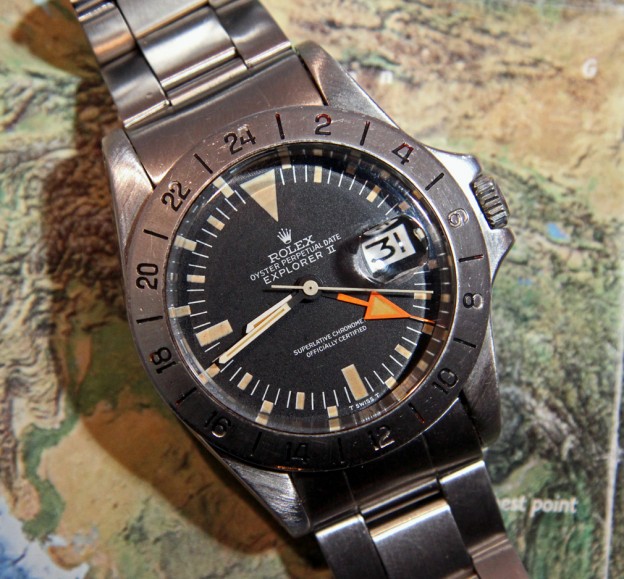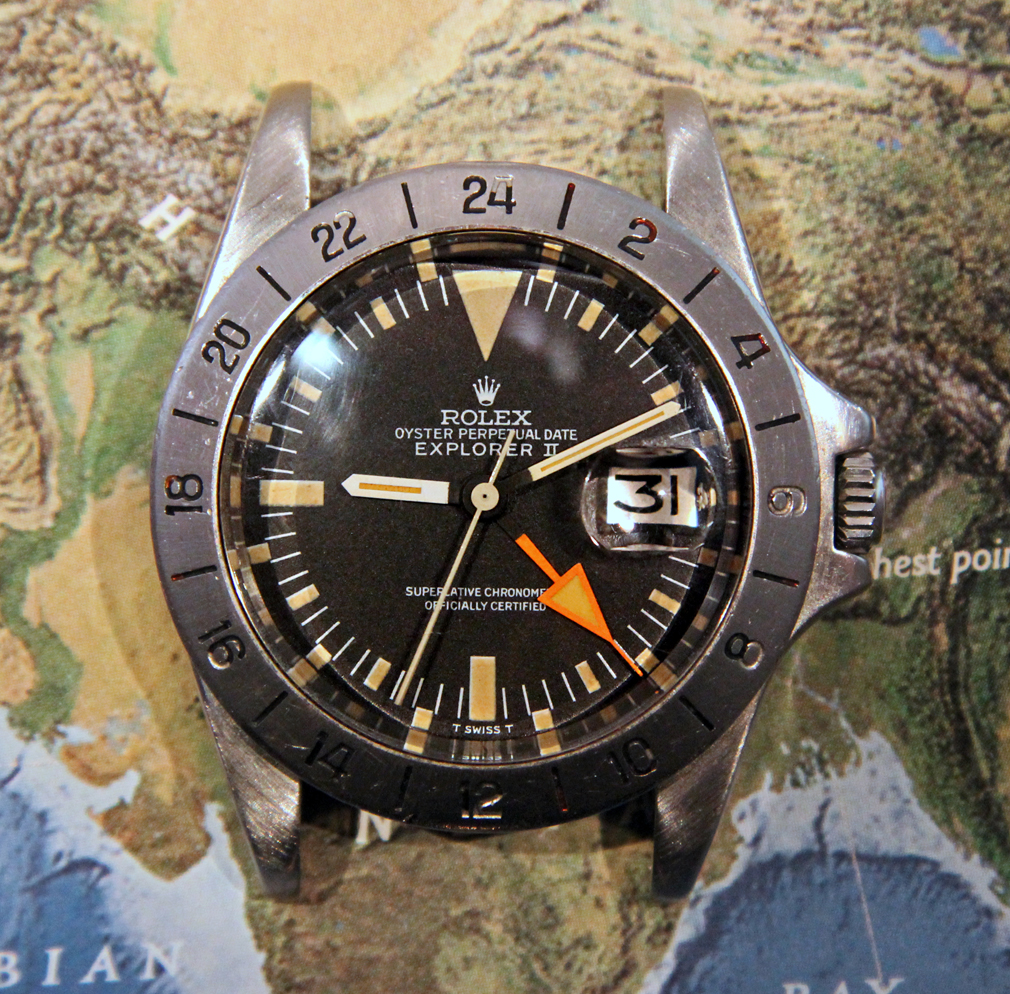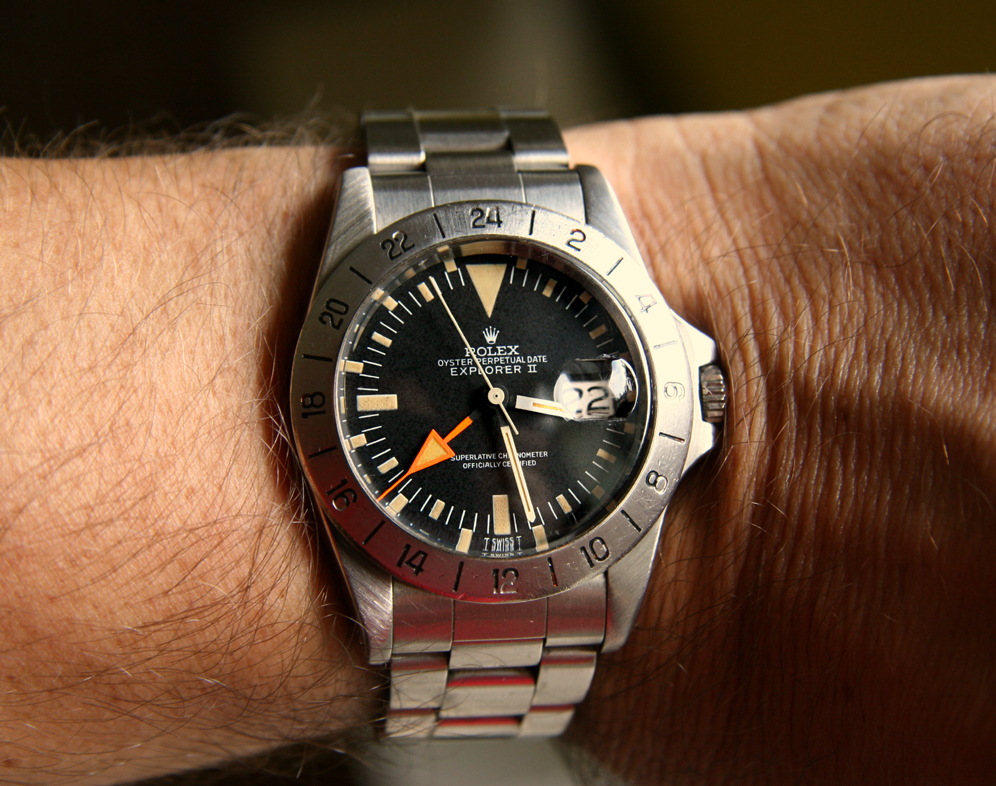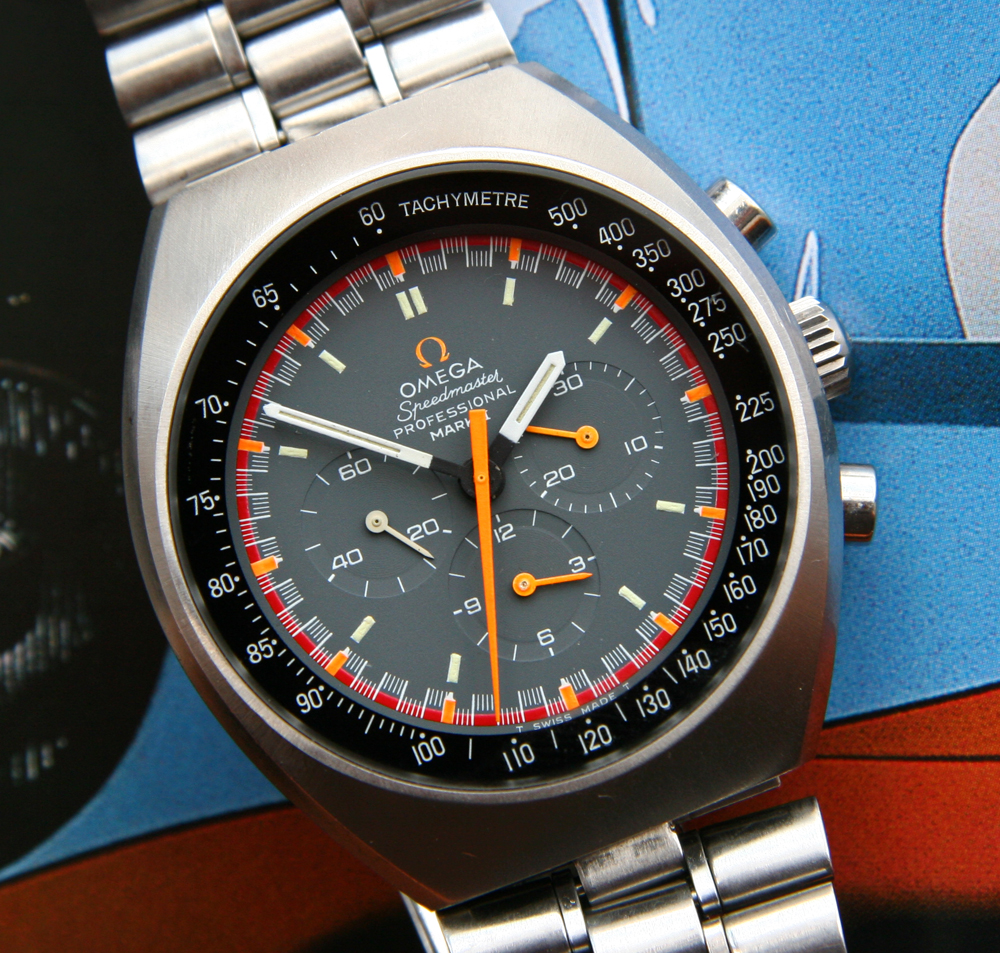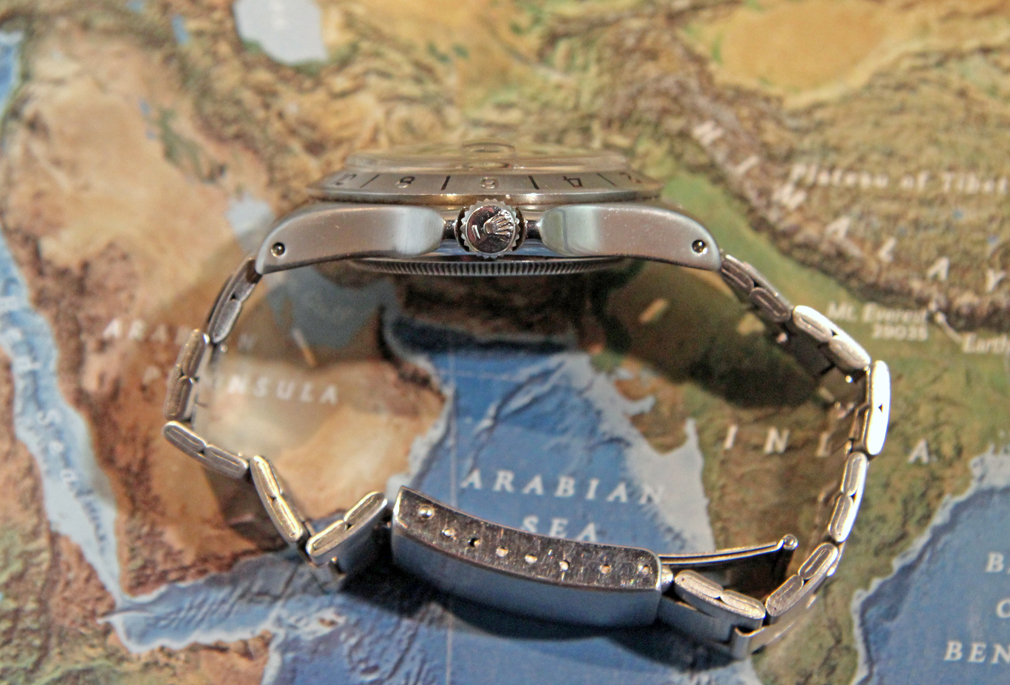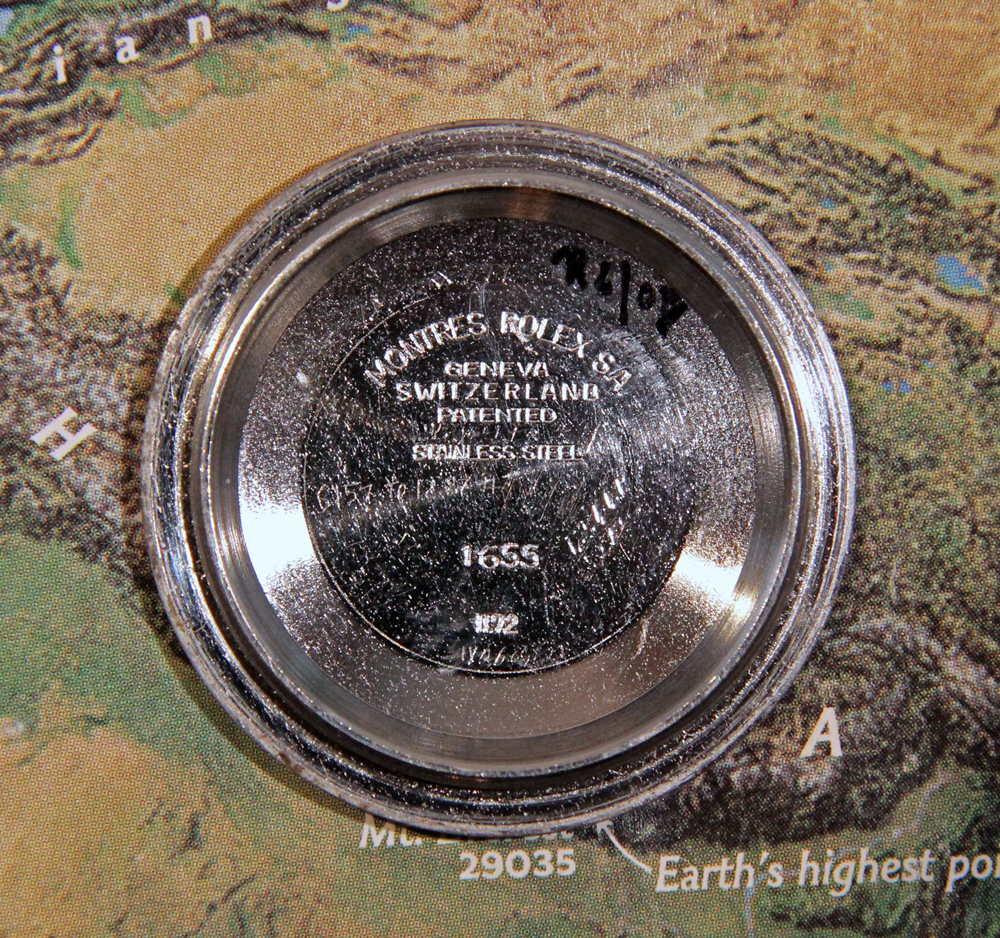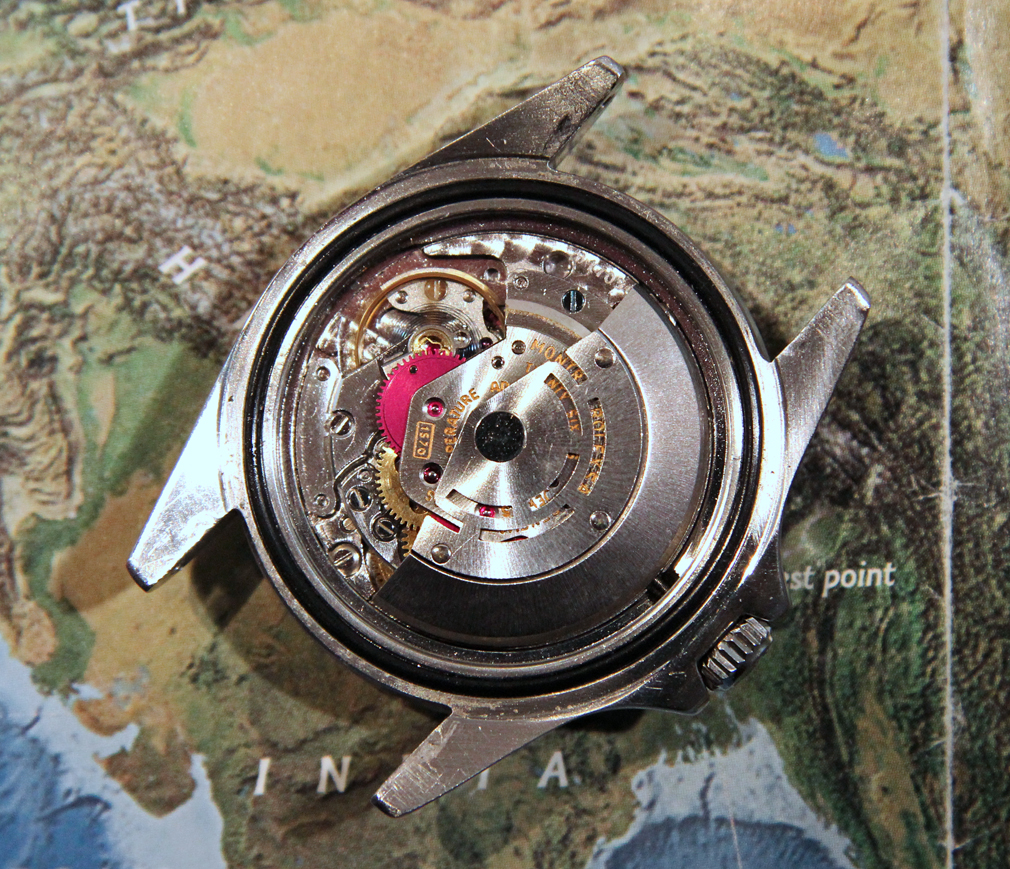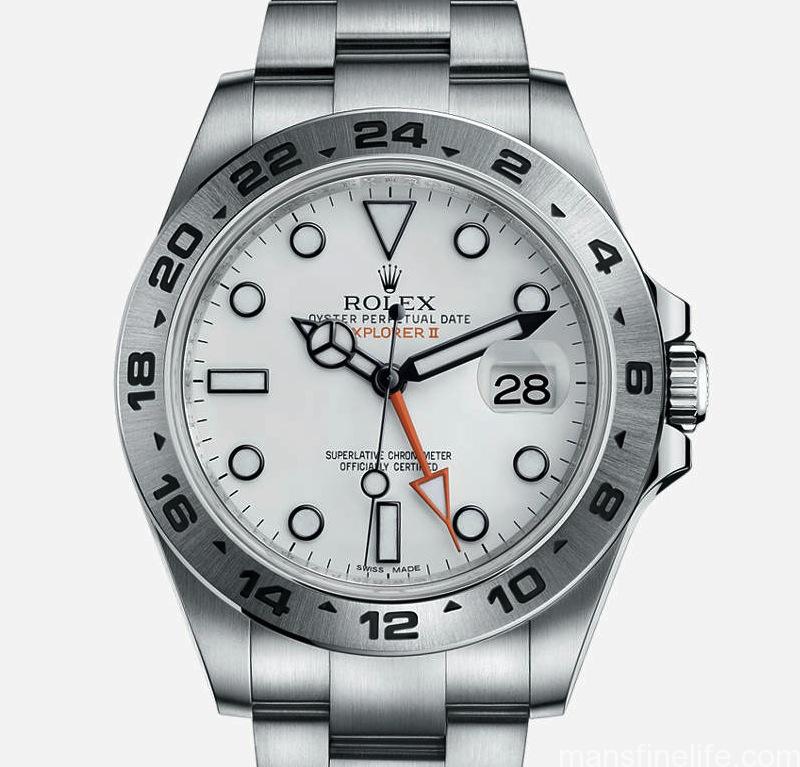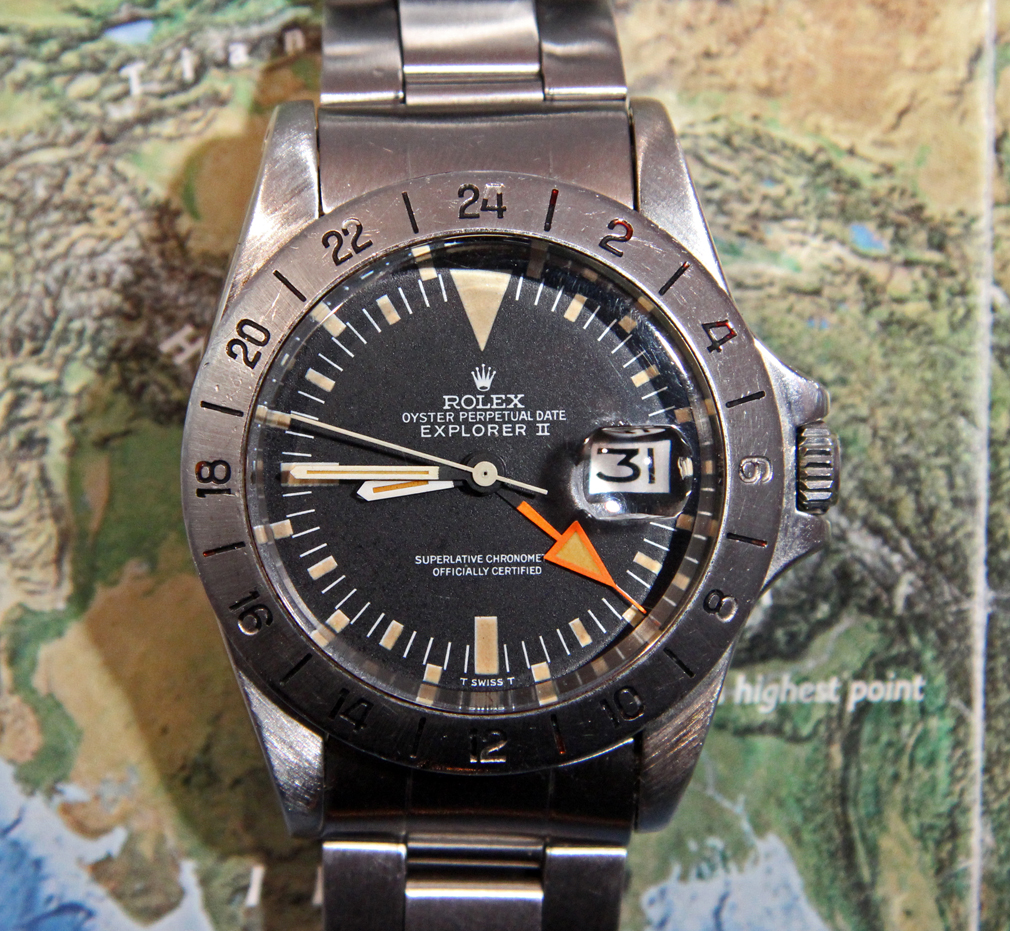
Early-version 1972 1655 Explorer II with characteristic dial, non-luminous “baton” sweep seconds and Mk II bezel
One of the most iconic vintage Rolexes out there doesn’t even look like a conventional Rolex. Sure, it’s got the classic 3-piece Oyster case — screw-down crown and back, pressure fit bezel — but the 1970s reference 1655 Explorer II shares very little else with its forebears. Most distinctly, the dial and hands are completely atypical for Rolex designs of that or any other era. Often fondly referred to as the “Disco Ball” by certain wags in England, the dial has an abundance of luminous “check” markers as opposed to the standard dots and bars on most Rolex Sports models such as Submariner and GMT, or the classic semi-Arabics layout of its predecessor, the Explorer.
So aside from the somewhat standard if oversize triangle at “12” the dial is an absolutely unique departure for Rolex. Upon closer inspection it is clear that the inner sequence of luminous checks corresponds to 12-hour time while the outer sequence is calibrated to the non-numbered odd-hour hashes of the fixed engraved 24-hour bezel.
It turns out that the original conception for the Explorer II was as a watch for spelunkers (!), with the highly luminous Big Orange 24-hour hand alerting the intrepid cavers as to whether it was day or night outside. This was one of the last Big Ideas from the great Rolex executive Rene-Paul Jeanneret, the man who spearheaded the design and marketing of the Submariner and GMT-Master and the second greatest figure in Rolex history behind founder Hans Wilsdorf. It is no overstatement to say that Mr. Jeannerett took the concept of the Sports or Tool watch to an entirely new level by pairing it with the genius idea of marketing these models to both the desk bound adventurer as well as the true sportsman and man of action. He achieved this by placing Rolexes in highly publicized adventure situations such as the Piccard Bathyscape Trieste deep dive, supersonic test flights and mountaineering adventures, to name but a few exploits.
The 1655 Explorer II was Jeanneret’s last great design concept. But while Rolex would eventually attempt to broaden the appeal of the radical new watch by also linking it to mountain climbers and other adventurers, the Explorer II was that rare thing for Jeanneret and his great watch company: a sales failure. Aside from the limited appeal of caving, the original stated purpose of the watch, it was most likely the idiosyncratic design that doomed it in terms of mass market appeal. For the fact is that as easy as it is to tell day from night via the oversized dayglow orange 24-hour hand — nicknamed “Freccione” by the Italians or roughly “big arrow” — telling time on the 12-hour scale is actually quite difficult at a glance due to the busyness of the dial and the natural confusion that the two tracks of luminous checks provokes.
So while the 1655 stayed in the Rolex catalogue from circa 1971 until 1984, the demand was never very high on the consumer side and consequently nowhere near as many original Explorer IIs were manufactured per annum as its nearest in-house competitor, the GMT-Master. It probably didn’t help the Explorer II that the perennially hot-selling GMT had more functionality with its rotating bezel indicating multiple time zones rather than the single-purpose 24-hour fixed bezel. But as is so often the case with Rolex, that which is unpopular in its day becomes extremely sought after once production of the model ceases. And so it is with the original Explorer II. Since at least the late 1990s, the Freccione has become one of the most sought after and desired vintage Rolex Sports models in the pantheon. The fact that it doesn’t look like any other Rolex is probably the key to its enduring appeal — it stands out from the sea of Subs and GMTs like a Warhol stands out from a Degas. It truly is Pop Art on the wrist.
And if Rolex were certainly following the trends of the 70s with the Omega Mark-style black & white luminous stick hands instead of the traditional Mercedes, the 1655 dial remains essentially unique and bespoke (at least until the modern era of “homage” knockoffs). So it becomes an ideal watch for the Rolex collector who wants something a little less staid but still with that Tool watch aura and design sensibility.
Now a couple of words about the Good and the Ugly of the 1655 Explorer II. First the Good: for the longest time now (since around 2007 or so), the Freccione has traded between around $12 and 14k for a standard loose example. Yes, that is a big chunk of change and enough to get you a pretty bitchin’ used car. But it also means the model has retained its value better than many vintage Rolex and without the vertiginous ups and downs of other models that followed the popping of the “Revolution” bubble in late 2008. So chances are what you pay for one today you can get out of it tomorrow. That also indicates that it’s not likely to increase big time in the near future but it does at least seem like a very safe place to park your money with a consistent track record of holding its value.
As for as the Ugly, like a lot of coveted Rolex models the Ex II is heavily faked with one of the most common techniques being to take a standard 1675 GMT case and caliber 1575 GMT movement and add on some combination of genuine or completely aftermarket hands, dial, bezel, etc to create the greater value of the 1655. So be very careful when you’re hunting one of these. Check the engraved numbers and nomenclature between the lugs and inside the back, as these are often an easy tipoff to spot a fake or re-engraved case, and definitely do your homework on the rest of the watch. There are several legitimate and subtle variations of the 1655 as it was produced over a decade or so (ca. 1971-84) so get familar with the genuine dial and bezel types. Only the earliest versions should have the “baton” sweep seconds — later they get the luminous bubble on the hand like other Sports models — and these are slightly more desirable with a corresponding higher price, so make sure an early one has the straight hand.
The best place, as always, to ask questions and to do your homework before you make the leap is over at the Vintage Rolex Forum. There you can look through images from the Dial Archive and search and ask questions on the Main Forum to see many examples of genuine 1655s while also receiving sage advice on pursuing one. Another invaluable resource for researching the nuances is the great Stefano Mazzariol’s blog. I highly recommend it for the Explorer II and many other collectible models — bookmark it today if you are serious about vintage Rolex. In other words, I really cannot emphasize enough that the Explorer II is an advanced sort of collectible that requires a lot of due diligence to avoid the pitfalls of buying a well done and expensive counterfeit — definitely look and learn hard before you leap!
All that being said, the classic big Orange Hand is well worth adding to your stable of vintage watches if you’ve got the cash, have done your research and are turned on by the retro-cool design. You can wear it while doing all the rough and tumble that you do with your other Rolex Oysters–it is a very tough watch. And you can dress it up or down as you like and most likely only the congniscneti will have any idea that what you have on your wrist is actually a Rolex. Even the company’s modern incarnation, which features its own Big Orange 24-hour hand, still doesn’t look anything like the original. No watch really has before or since.
About the only thing you can’t say about the funky Freccione is that it is a “Steve McQueen” watch. Despite the nickname, which seems to have been tacked on by some dealers desperate to ape the success in hyping the “Paul Newman” Daytona, there is no evidence whatsoever that the King of Cool ever wore an Explorer II. Steve was a Sub guy through and through. But that’s OK: you’re blazing your own trail, right? Good, because very few watches say “individualist” quite like the 1655 Explorer II. Its not a watch you’re likely to see on everyone else’s wrist — only the lucky and funky few.

